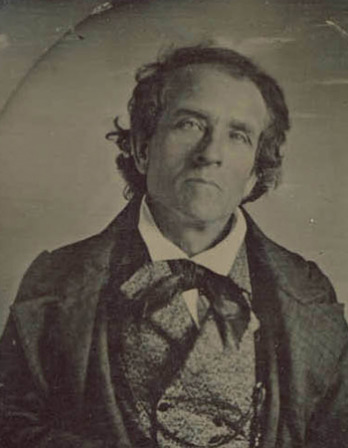I have always found it in mine own experience an easier matter to devise many and profitable inventions than to dispose of one of them to the good of the author himself.
—Hugh Plat, 1595Work Force
Frederick W. Taylor offers some productivity hacks.
The principal object of management should be to secure the maximum prosperity for the employer, coupled with the maximum prosperity for each employee. The words maximum prosperity are used, in their broad sense, to mean not only large dividends for the company or owner but the development of every branch of the business to its highest state of excellence, so that the prosperity may be permanent.
In the same way, maximum prosperity for each employee means not only higher wages than are usually received by men of his class but, of more importance still, it also means the development of each man to his state of maximum efficiency, so that he may be able to do, generally speaking, the highest grade of work for which his natural abilities fit him, and it further means giving him, when possible, this class of work to do.
It would seem to be so self-evident that maximum prosperity for the employer coupled with maximum prosperity for the employee ought to be the two leading objects of management, that even to state this fact should be unnecessary. And yet there is no question that throughout the industrial world, a large part of the organization of employers, as well as employees, is for war rather than for peace, and that perhaps the majority on either side do not believe that it is possible so to arrange their mutual relations that their interests become identical.
The majority of these men believe that the fundamental interests of employees and employers are necessarily antagonistic. Scientific management, on the contrary, has for its very foundation the firm conviction that the true interests of the two are one and the same; that prosperity for the employer cannot exist through a long term of years unless it is accompanied by prosperity for the employee, and vice versa; and that it is possible to give the workman what he most wants—high wages—and the employer what he wants—a low labor cost—for his manufactures.
It is hoped that some at least of those who do not sympathize with each of these objects may be led to modify their views; that some employers, whose attitude toward their workmen has been that of trying to get the largest amount of work out of them for the smallest possible wages, may be led to see that a more liberal policy toward their men will pay them better; and that some of those workmen who begrudge a fair and even a large profit to their employers, and who feel that all of the fruits of their labor should belong to them, and that those for whom they work and the capital invested in the business are entitled to little or nothing, may be led to modify these views.
No one can be found who will deny that in the case of any single individual, the greatest prosperity can exist only when that individual has reached his highest state of efficiency, that is, when he is turning out his largest daily output. The truth of this fact is also perfectly clear in the case of two men working together. To illustrate: if you and your workman have become so skillful that you and he together are making two pairs of shoes in a day while your competitor and his workman are making only one pair, it is clear that after selling your two pairs of shoes, you can pay your workman much higher wages than your competitor who produces only one pair of shoes is able to pay his man, and that there will still be enough money left over for you to have a larger profit than your competitor.
In the case of a more complicated manufacturing establishment, it should also be perfectly clear that the greatest permanent prosperity for the workman, coupled with the greatest prosperity for the employer, can be brought about only when the work of the establishment is done with the smallest combined expenditure of human effort, plus nature’s resources, plus the cost for the use of capital in the shape of machines, buildings, etc. Or to state the same thing in a different way: the greatest prosperity can exist only as the result of the greatest possible productivity of the men and machines of the establishment—that is, when each man and each machine are turning out the largest possible output, because unless your men and your machines are daily turning out more work than others around you, it is clear that competition will prevent your paying higher wages to your workmen than are paid to those of your competitor. And what is true as to the possibility of paying high wages in the case of two companies competing close beside one another is also true as to whole districts of the country and even as to nations that are in competition. In a word, that maximum prosperity can exist only as the result of maximum productivity.

AE 1144, from the series Aeroglyphs, by Reuben Wu, 2019. © Reuben Wu, courtesy the artist and photo-eye Gallery, Santa Fe.
If the above reasoning is correct, it follows that the most important object of both the workmen and the management should be the training and development of each individual in the establishment so that he can do (at his fastest pace and with the maximum of efficiency) the highest class of work for which his natural abilities fit him.
These principles appear to be so self-evident that many men may think it almost childish to state them. Let us, however, turn to the facts as they actually exist in this country and in England. The English and American peoples are the greatest sportsmen in the world. Whenever an American workman plays baseball or an English workman plays cricket, it is safe to say that he strains every nerve to secure victory for his side. He does his very best to make the largest possible number of runs. The universal sentiment is so strong that any man who fails to give out all there is in him in sport is branded as a “quitter” and treated with contempt by those who are around him.
When the same workman returns to work on the following day, instead of using every effort to turn out the largest possible amount of work, in a majority of the cases this man deliberately plans to do as little as he safely can—to turn out far less work than he is well able to do—in many instances to do not more than one-third to one-half of a proper day’s work. And, in fact, if he were to do his best to turn out his largest possible day’s work, he would be abused by his fellow workers for so doing, even more than if he had proved himself a “quitter” in sport. Under working, that is, deliberately working slowly so as to avoid doing a full day’s work, “soldiering,” as it is called in this country, “hanging it out,” as it is called in England, “ca canae,” as it is called in Scotland, is almost universal in industrial establishments and prevails also to a large extent in the building trades, and the writer asserts without fear of contradiction that this constitutes the greatest evil with which the working people of both England and America are now afflicted.

Frederick W. Taylor
From The Principles of Scientific Management. In the 1870s and 1880s, Taylor rose from machinist to chief engineer at the Midvale Steel Company, where he developed what he called “time study,” using stopwatches to determine the most efficient uses of men and machines. Taylorism, his system of scientific management, later influenced the field of industrial engineering. Management guru Peter Drucker referred to him as “the Isaac Newton (or perhaps the Archimedes) of the science of work,” while historian Eugene McCarraher called Taylorism “a method of dispossession, surveillance, and control.”




